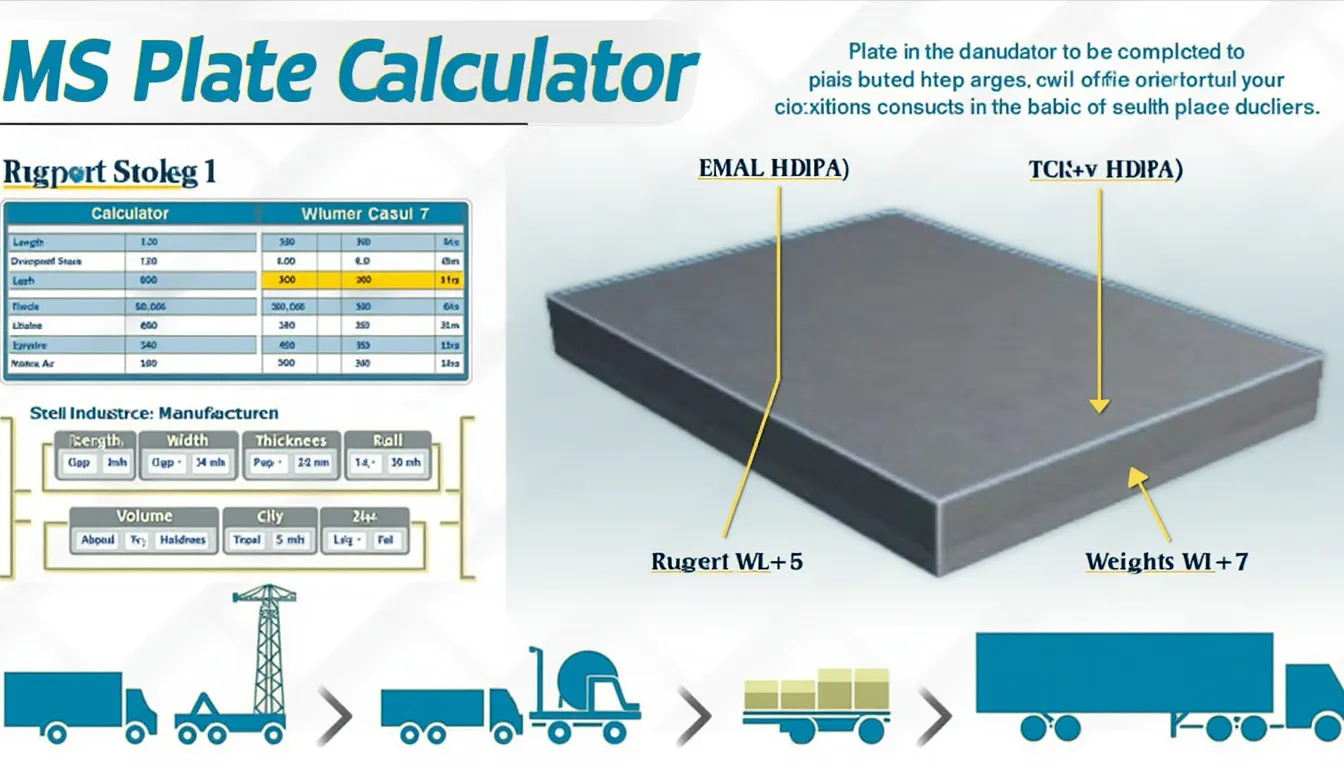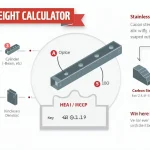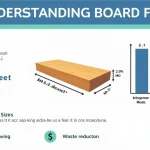MS Plate Weight Calculator
Is this tool helpful?
How to use the tool
- Enter the length – e.g., 1,000 mm or 48 in.
- Select the length unit (mm, cm, m, inches, or feet).
- Enter the width – e.g., 1,500 mm or 5 ft.
- Select the width unit to match your entry.
- Enter the thickness – e.g., 8 mm or 0.3 in.
- Select the thickness unit.
- Press “Calculate”; the tool shows weight in kilograms and pounds.
Formula used
All inputs convert to metres. Weight is:
$$ W = L \times W \times T \times \rho $$- L = length (m)
- W = width (m)
- T = thickness (m)
- ρ = 7 850 kg/m³ (mild steel density) (EngineeringToolbox.com)
Worked example
- Length: 2 500 mm → 2.5 m
- Width: 1 250 mm → 1.25 m
- Thickness: 6 mm → 0.006 m
Volume:
$$ V = 2.5 \times 1.25 \times 0.006 = 0.01875\ \text{m}^3 $$Weight:
$$ W = 0.01875 \times 7 850 = 147.19\ \text{kg} $$Convert to pounds:
$$ 147.19 \times 2.20462 = 324.49\ \text{lb} $$Quick-Facts
- Density of mild steel: 7 850 kg/m³ (EngineeringToolbox.com).
- Common plate widths: 1.2 – 1.5 m (ISO 7452).
- Thickness range stocked: 1.6 – 100 mm (EN 10029).
- Weight tolerance: ±4 % for <10 mm plates (ASTM A6/A6M-22).
- Average global price: $0.75-0.90 per kg, Q2 2023 (SteelBenchmarker Report).
FAQ
What is mild-steel density?
Standard design uses 7 850 kg/m³, verified by “Steel—Physical Properties” (EngineeringToolbox.com).
Can I change the density for stainless steel?
Yes. Substitute 8 000 kg/m³ for austenitic stainless grades per EN 10088-1 data.
Does thickness affect weight linearly?
Weight rises in direct proportion to thickness because volume increases linearly with that dimension (Shigley, 2020).
How accurate is the calculator?
The result is within ±1 % when dimensions are measured to the nearest millimetre; plate rolling tolerances govern the rest (ASTM A6/A6M-22).
Why convert all units to metres?
Using a single unit avoids rounding errors and matches SI formulas recommended by ISO 80000-1.
What size limits apply?
Input up to 20 m length, 5 m width, and 0.1 m thickness—the typical maximum mill-rolled plate size (SSAB DataSheet).
How do I estimate shipping weight?
Multiply the computed kilograms by 2.20462 to get pounds; “1 kg = 2.20462 lb” (NIST, 2020).
Is this tool mobile-friendly?
It loads responsively in any modern browser; no installation required.
Important Disclaimer
The calculations, results, and content provided by our tools are not guaranteed to be accurate, complete, or reliable. Users are responsible for verifying and interpreting the results. Our content and tools may contain errors, biases, or inconsistencies. Do not enter personal data, sensitive information, or personally identifiable information in our web forms or tools. Such data entry violates our terms of service and may result in unauthorized disclosure to third parties. We reserve the right to save inputs and outputs from our tools for the purposes of error debugging, bias identification, and performance improvement. External companies providing AI models used in our tools may also save and process data in accordance with their own policies. By using our tools, you consent to this data collection and processing. We reserve the right to limit the usage of our tools based on current usability factors.







